If you are looking for an insect-friendly ornamental plant for the garden that defies climate change and also gets by with few nutrients, the bladder bush is the right choice.
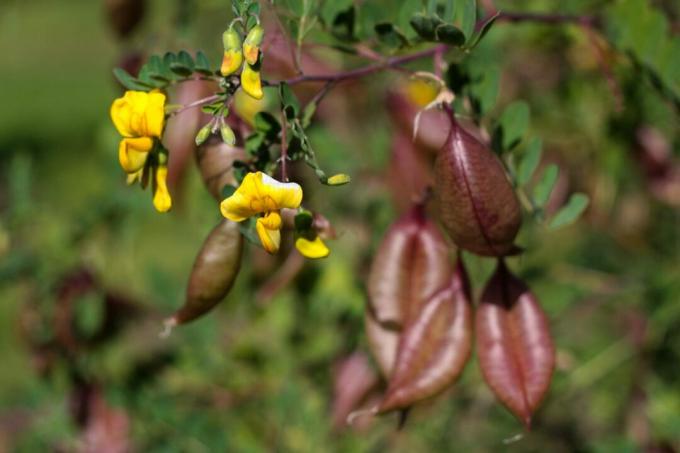
Not only the inflated legumes make bubble bushes (Colutea) to special plants. The long flowering period, the drought tolerance and the ability to fix nitrogen as fertilizer from the air itself, thanks to a symbiosis with bacteria, speak in favor of this special tree. In this article you will learn about the suitable location for bladder bushes about pruning and care everything you need to know about growing bubble bushes in the garden - right down to answering the question if Colutea arborescens is toxic.
contents
- Bladder bush: origin and properties
- The most beautiful bladder bush varieties
- Plants: location and procedure
- Care of the bladder bush
- Is the bladder bush hardy?
- propagation
- Is Bladder Bush Poisonous?
Bladder bush: origin and properties
The Bubble Bushes (Colutea) form a genus with about 26 species within the legume family (Fabaceae). Like most legumes, bladder shrubs form a symbiosis in their root zone with bacteria that can fix nitrogen from the air. Therefore, they do not need to be fertilized with nitrogen.
The common bladder bush (Colutea arborescens) to be found. It is also called yellow bladder bush or common bladder bush and originally comes from the Mediterranean and North Africa. In Germany it only occurs naturally on the Upper Rhine, but can also be found in other places in the wild.
The growth of bubble bushes is rather slow and sprawling. Maximum they will be 2 to
4 m high and just as wide. Their root system is rather shallow. In the fall, bladderbushes shed their leaves, which are imparipinnate, with elliptical leaflets about 3.5 cm long. The bladder bush flowers from May to August. Therefore, one can admire the typical butterfly flowers, which are yellow-orange in the common bladderbush, over a relatively long period of time. The fruits of the bladder bush also have a high ornamental value, because they are inflated pods that are 3 to 6 cm long. It contains 20 to 30 black, lentil-like seeds.

Is the bladder bush bee friendly? Basically, bladder bushes are very insect-friendly plants, especially thanks to their long flowering period. However, it is not so easy for many insects to get the pollen, which is why larger wild bees are more likely to be found on bladder bushes. These include, for example, bumblebees (bomb) or carpenter bees (Xylocopa). One insect that requires the bladderbush to survive is the endangered bladderbush blue (Iolana iolas) – a butterfly whose caterpillars develop in the pods of bladder bushes.
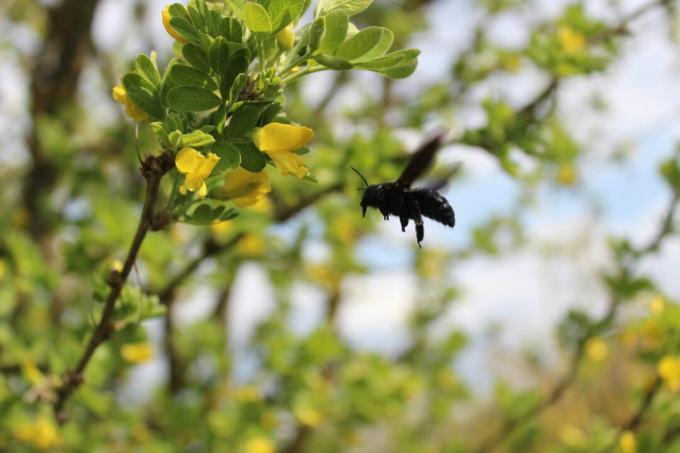
The most beautiful bladder bush varieties
In addition to the common bladder bush, there are only a few other species and varieties here. This small list will help you choose the right shrub for your garden.
Common Bladder Shrub (Colutea arborescens): The common bladder bush is the leading species of the genus Colutea. It grows to a height of 3 to 4 m, tolerates temperatures down to – 23 °C and impresses with yellow flowers and a long flowering period.
Orient Bladder Bush (Colutea orientalis):Colutea orientalis Also called Red Bladder Bush, although its flowers are more orange-yellow. With a maximum height of about 2 m, it is the smallest of the bladder bushes presented here. Similar to Common Bladder Bush Colutea orientalis also hardy to around – 20 °C.

Bladder bush 'Copper Beauty' (Colutea x media ‘Copper Beauty’): The bladder bush variety 'Copper Beauty' is a hybrid, i.e. the crossing of two different species - in the case of Colutea x media between Colutea arborescens and Colutea orientalis. Its yellow-orange to copper-colored flowers are special. Unfortunately, 'Copper Beauty' is a little less hardy and can only tolerate temperatures down to around -17 °C.
Tip: There can also be confusion with the bladder bush. Less in terms of appearance than in terms of name. In the trade there is, for example, the bubble tree (Koelreuteria paniculata) and the bubble spar (Physocarpus opulifolius), but these are plants from completely different families.
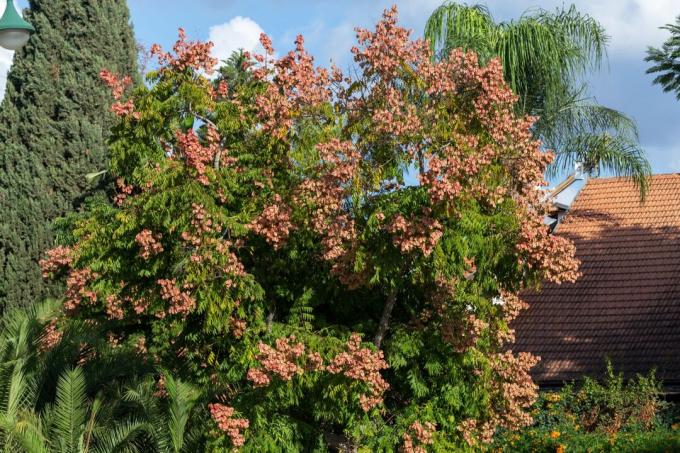
Plants: location and procedure
Bladder bushes do well in places where many other plants struggle. An optimal location for bladder bushes should be sunny and have well-drained, lean and rather calcareous soil. Even wind and salt don't bother blister bushes.
The optimal planting time for bladder bushes is in autumn, regardless of whether they are in containers or bare-root plants. Plants in pots, in particular, can be planted in the ground as early as April.
You can adjust the planting distance to suit your preferences. You can have bladder bushes as a solitary eye-catcher in the garden if there is enough space, but you can also integrate them into insect-friendly hedges. Then ensure a minimum planting distance of at least 50 cm.
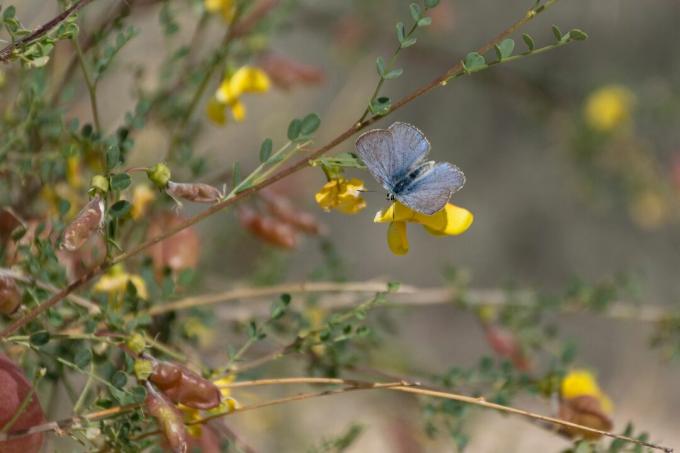
Once you have chosen a suitable location, you can plant your bladder bush.
- Dig the planting hole. It should be so deep that the plant later sits just as deep in the ground as it did before in the pot.
- Especially with humus-rich, loamy soils, it is advisable to use our excavation for example Plantura lawn sand or expanded clay and some garden lime like ours Plantura Lawn & Garden Lime to mix. Because the bladder bush otherwise only thrives unsatisfactorily on soil that is too fertile. Our products are CO2-compensated and come to you with many useful tips for professional use.
- Put the bladder bush in the planting hole and fill it back up with the excavation.
- Tamp down the soil around the shrub and water well. Especially in the early days, when the root system is not yet sufficiently developed, bladder bushes also need a little more water. By modeling a casting ring out of soil, you prevent the irrigation water from simply running away.
- In any case, make sure that the shrub does not get too cold in the first year. A layer of mulch on the root ball, for example, or a jute bag that is placed over the shrub offer protection.
Care of the bladder bush
Hardly any plant in the garden requires less care than a bladder bush.
You should only use a watering can during extremely dry periods. Since the bladder bush comes from the Mediterranean region, it gets along very well with little water and, on the contrary, even reacts with stunted growth on soil that is too moist.
You don't even have to fertilize your bladder bush. Thanks to the symbiosis with nodule bacteria, the shrub itself ensures a sufficient supply of nitrogen. Additional fertilization would stimulate growth, but at the same time ensure that the shrub becomes more susceptible to frost - because fresh, young tissue is usually the first to be swept away by frost.

Pruning bladder bushes is not absolutely necessary, but can always be done if you want to keep the bush young. For this you can cut off some of the old shoots at the base every few years in spring. However, this should not be more than a third of all shoots. Annual shoots can also be shortened in spring before they sprout.
Our soils tend to be acidic. Therefore, regular liming is part of the care of the bladder bush. We recommend carbonated lime for this, like ours Plantura Lawn & Garden Lime, as it has a longer lasting effect. The easiest way to determine when it is time for the next liming is to use the soil pH certainly. If this is below 6.5, it is time for the next liming.
Care at a glance:
- Water only during extreme dry periods.
- Fertilizing is not necessary.
- In the spring you can cut the bladder bush if you want to influence its growth.
- Liming should be done when the pH of the soil falls below 6.5.
Is the bladder bush hardy?
With us, the bladder bush is very hardy, because it survives temperatures down to - 23 °C. However, as this varies slightly from shrub to shrub, very cold winter nights can sometimes affect some bladder shrubs as well. It therefore does no harm if you cover the rootstock with a layer of mulch, for example leaves or ours Plantura organic pine bark, protects.
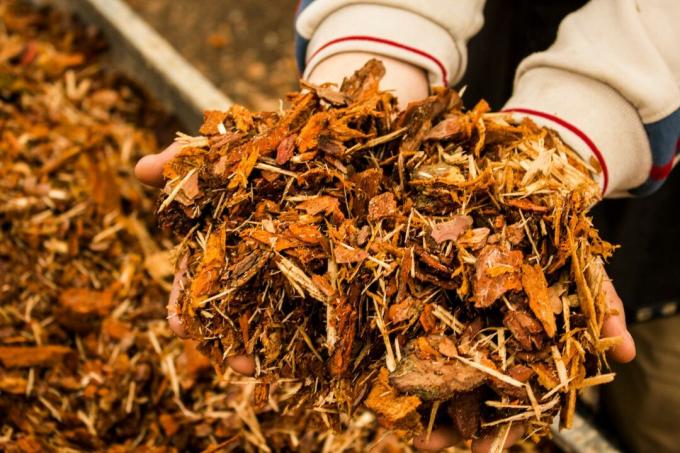
propagation
The easiest way to propagate the bladder bush is by seeds or cuttings.
Bladder bush seeds can be sown either directly on the spot or in small pots. In the fall, collect the black seeds found in fallen pods and store them in a dark, dry, rather cool place through the winter.
- February is the time for sowing. First soak the seeds in water for about 10 hours.
- Fill small pots about 8-10 cm in diameter with moistened potting soil, for example ours Plantura herbal & seed soil.
- Plant 2 to 3 bladder bush seeds about 1 cm deep in the ground.
- Place the pots in a bright place with a temperature of around 20 °C.
- In the next few days, make sure that the substrate does not dry out. After 10 to 20 days the seeds should germinate.
- If more than one seed has germinated per pot, you should remove the weaker seedlings at a height of about 3 cm and leave only the strongest.
- Once the plants are about 10cm tall, they can be planted out in their final location.
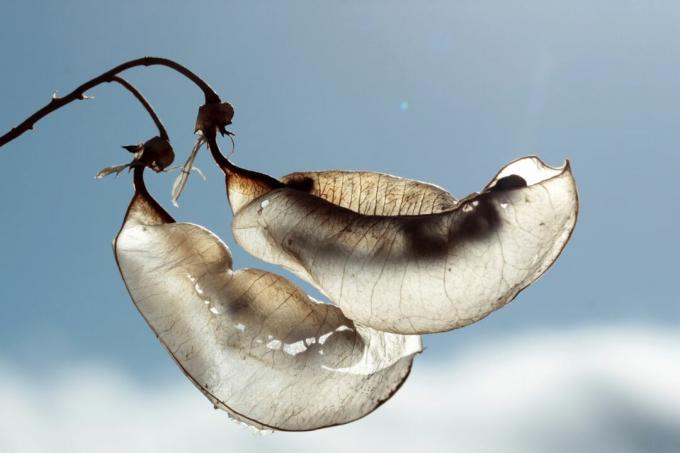
the Propagation via softwood cuttings is also possible. To do this, cut off approximately 10 cm long shoot tips without flowers from your bladder bush at the end of spring. Remove the lower leaves from the cutting, leaving only the top 5 cm. The cuttings are then placed in small pots filled with moist growing soil. If the leaflets then hang on the ground, they are shortened to a more practical length. In the near future it is particularly important that the substrate is constantly moist. In addition, the cuttings should be in a light and warm, but not hot place. Drying out can be prevented by putting plastic bags over the pots and fixing them with a rubber band. However, it is important to air under the bags at least twice a week. When the cuttings are rooted, they are planted individually in about 9 cm pots. The fresh growth is later pruned to achieve bushy branching.
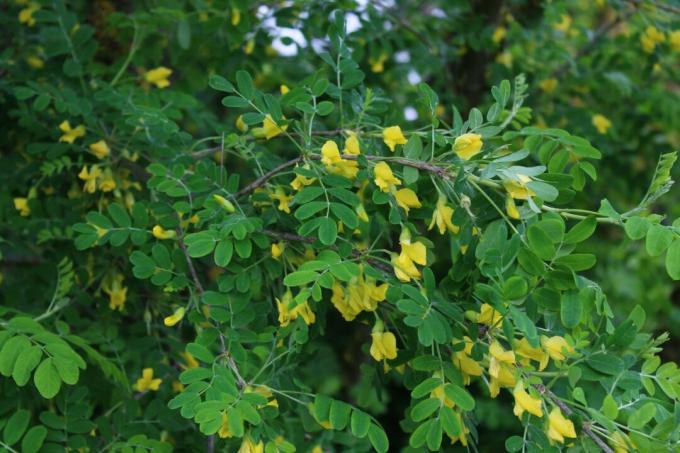
Is Bladder Bush Poisonous?
Not only the yellow bladder bush is slightly poisonous. Accordingly, when eating plant parts of the other types of Colutea mild symptoms of poisoning such as nausea and vomiting may occur. Bladder bushes are also poisonous for horses, dogs and cats, which manifests itself in gastrointestinal complaints and diarrhea, as in humans.
Are you looking for other ornamental plants for dry, lean locations? Then you could for example die rue (Ruta graveolens) interested.



